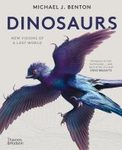By: Corwin Sullivan(Author), Yuan Wang(Author), Brian Choo(Author)
548 pages, colour & b/w photos, colour illustrations
![From Fish to Human: The March of Vertebrate Life In China [English / Chinese] From Fish to Human: The March of Vertebrate Life In China [English / Chinese]]()
Click to have a closer look
About this book
Contents
Customer reviews
Related titles
About this book
Language: Bilingual in English and Chinese
This is a history of vertebrate life in China reconstructed by three palaeontologists from three different countries, which not only answers the classic philosophic question: "where did we come from", but also opens a window to the amazed, incidental and unimaginable world of the evolution of life. The authors narrate the 500 million year history in such a vivid and interesting way, spectacular but no loss of detail, while abounded with elaborate metaphors and deep reflections. The special focus of From Fish to Human: The March of Vertebrate Life In China, the "Nine Key Transitions" in the evolution from fish to human, also deserves the reader's scrutiny.
In From Fish to Human: The March of Vertebrate Life In China, the historical march of vertebrate life in China is exampled by fifteen representative faunas which were based upon several hundred thousand fossil specimens as solid evidence. Some high resolution photos and structural reconstructions of fossils are presented for the first time, showing the typical Chinese beauty of life in the past hundred million years, and leading the fossil lovers into the exploration of prehistoric life. In the meanwhile, these evolutionary records of the march of life are also part of the charm of palaeontology.
Contents
Table of Contents
Introduction
Just as archaeologists can piece together much of the history of the Shang from the material evidence of oracle bones and bronze cauldrons, palaeontologists can use fossils to reconstruct the far longer and more outlandish history of life on Earth.
Before we Begin: Vertebrates, Deep Time and Fossils
Skeletons that remain largely intact are rare and precious gifts from deep time to humanity.
Part One Palaeozoic:Cold Blood and Scales
The Chengjiang Biota: Dawn of the Vertebrates
The Xiaoxiang Fauna: Fishing for Answers
The Zhongning Fauna: A New Breed of Vertebrate
The Dashankou Fauna: Beasts and Belebey
Part Two Mesozoic:The Empire of Dinosaurs
The Guanling Biota: Life Among the Dangling Crinoids
The Lufeng Fauna: China’s Oldest Dinosaurs
The Dashanpu Dinosaur Fauna: Giants on the Earth
The Daohugou Biota: Preserved in their Finery
The Jehol Biota: Feathered Dinosaurs!
The Wangshi Fauna: A Vast Dinosaurian Necropolis
Part Three Cenozoic:The Triumph of Mammals
The Qianshan Fauna: Life After the Apocalypse
The Shara Murun Fauna: Hooves, Horns and Rams
The Shanwang Biota: Almost Like Today
The Hezheng Biota: Horses, Hogs and Hyenas
The Zhoukoudian Fauna: The First Beijingers
Afterword
Further reading
Appendix 1: Locations of Major Vertebrate Fossil Sites in China
Appendix 2: Chinese Museums that display fossils to the public
Index of Genus Names Used in the Book
Customer Reviews
By: Corwin Sullivan(Author), Yuan Wang(Author), Brian Choo(Author)
548 pages, colour & b/w photos, colour illustrations





![From Fish to Human: The March of Vertebrate Life In China [English / Chinese] From Fish to Human: The March of Vertebrate Life In China [English / Chinese]](http://mediacdn.nhbs.com/jackets/jackets_resizer_xlarge/22/224182.jpg?height=620)
![From Fish to Human: The March of Vertebrate Life In China [English / Chinese]](http://mediacdn.nhbs.com/jackets/jackets_resizer/22/224182.jpg)
![From Fish to Human: The March of Vertebrate Life In China [English / Chinese]](http://mediacdn.nhbs.com/jackets/jackets_resizer/22/224182_1.jpg)
![From Fish to Human: The March of Vertebrate Life In China [English / Chinese]](http://mediacdn.nhbs.com/jackets/jackets_resizer/22/224182_2.jpg)
![From Fish to Human: The March of Vertebrate Life In China [English / Chinese]](http://mediacdn.nhbs.com/jackets/jackets_resizer/22/224182_3.jpg)
![From Fish to Human: The March of Vertebrate Life In China [English / Chinese]](http://mediacdn.nhbs.com/jackets/jackets_resizer/22/224182_4.jpg)
![From Fish to Human: The March of Vertebrate Life In China [English / Chinese]](http://mediacdn.nhbs.com/jackets/jackets_resizer/22/224182_5.jpg)
![From Fish to Human: The March of Vertebrate Life In China [English / Chinese]](http://mediacdn.nhbs.com/jackets/jackets_resizer/22/224182_6.jpg)
![From Fish to Human: The March of Vertebrate Life In China [English / Chinese]](http://mediacdn.nhbs.com/jackets/jackets_resizer/22/224182_7.jpg)



















![The Fossil Record of Three Billion Years in Liaoning, China [Chinese]](http://mediacdn.nhbs.com/jackets/jackets_resizer_medium/19/192271.jpg?height=150&width=117)
![Monogeneans of Chinese Marine Fishes [English / Chinese]](http://mediacdn.nhbs.com/jackets/jackets_resizer_medium/23/230733.jpg?height=150&width=108)

![Some Brachyura and Anomura Fauna from Siaolioucious, Taiwan [Chinese]](http://mediacdn.nhbs.com/jackets/jackets_resizer_medium/21/218534.jpg?height=150&width=106)

![Ichneumonid Fauna of Liaoning (Hymenoptera: Ichneumonidae) [Chinese]](http://mediacdn.nhbs.com/jackets/jackets_resizer_medium/23/231336.jpg?height=150&width=103)
![Guide To The Cephalopods of Taiwan [English / Chinese]](http://mediacdn.nhbs.com/jackets/jackets_resizer_medium/23/237508.jpg?height=150&width=114)
![Fauna, Distribution Pattern and Adaptability on Acridoidea from Yunnan [Chinese]](http://mediacdn.nhbs.com/jackets/jackets_resizer_medium/19/195908.jpg?height=150&width=106)
![Fauna Sinica: Insecta, Volume 61: Coleoptera: Chrysomelidae: Chrysomelinae [Chinese]](http://mediacdn.nhbs.com/jackets/jackets_resizer_medium/21/216584.jpg?height=150&width=107)